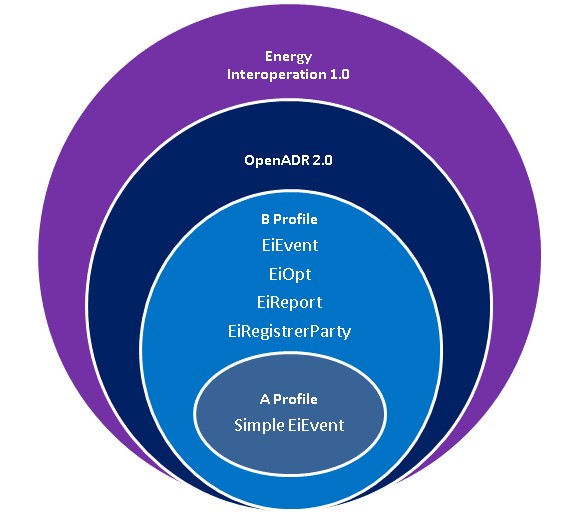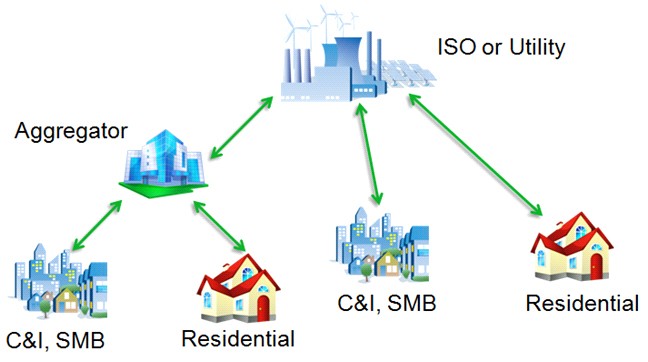Accelerate the Smart Grid
The following publication originally appeared in an article published by “Automated Building“. It is a conversation between the writer and Jim Zuber, QualityLogic’s Chief Test Architect.
Our company mission is to accelerate the smart grid by providing the tools to ensure and accelerate the interoperability aspects of standardized technologies like OpenADR.
Zuber: OpenADR 2.0 is clearly a rapidly emerging open standard for automating demand response programs worldwide. To our knowledge it is the only standard specifically tailored to demand response programs and is currently being adopted by Japan and Korea, as well as in California (where it was started) and throughout the U.S. As QualityLogic became involved in the smart grid industry, OpenADR was just emerging as an important standard. In late 2009, QualityLogic was very involved with the NIST Smart Grid Interoperability Panel Test and Certification Committee. Our company mission is to accelerate the smart grid by providing interoperability tools and services to standardized technologies like OpenADR.
At the same time, the founders of the OpenADR standard and OpenADR Alliance (http://www.openadr.org/) were just starting to create the Alliance and the test and certification program. QualityLogic became an early participant to assist in conceptualizing and then implementing the interoperability tools and services for the new standard. We had an idea about how our skills in test development could be applied to the challenges of developing world-class certification programs and were successful in convincing the Alliance to partner with us to implement those ideas. The key components we proposed were to develop both a certification test suite and then package the same test suite for use by vendors as a pre-certification test tool.
Sinclair: What is the role of QualityLogic with OpenADR?
Zuber: Our role is to define and develop the interoperability tools and services used for both pre-certification testing by vendors and for final certification testing by the official OpenADR certification lab. In our role, we have also been very involved in assisting the Alliance Technical Committee in defining the exact technical specification for OpenADR 2.0 and the specification for validating conformance to the standard. From that specification (called the Protocol Implementation Conformance Statement) we were able to develop the test specification and then the actual test suite and test harness for OpenADR 2.0 Profile A and Profile B.
We continue to support the Alliance and customers for the test tool and expect to improve and enhance the interoperability tools and services for OpenADR in the future as the standard and technology mature.

Graphic: OpenADR “A” profile is targeted at limited resource devices and simple DR applications, while “B” profile is targeted at robust devices and sophisticated DR applications.
Sinclair: What is included in the training workshop?
Zuber: Attendees of the two-day workshop will gain conceptual, detailed technical and hands-on understanding of what OpenADR 2.0 is and how it works. Participants will become familiar with OpenADR 2.0 technology; Certification Profiles “a” and “b”; the formal conformance certification program; and the pre-certification tests and tools for these profiles and OpenADR 2.0 specifications. Workshop participants will also learn how OpenADR 2.0 based solutions can be used to automate typical utility DR programs.

Sinclair: What benefits do attendees at the workshop get?
Zuber: The real value for attendees is the time they save. A typical engineer capable of developing an OpenADR product might cost a company $10,000 a month. The course can reduce learning time by weeks and provide insights and tips on understanding the technical specification and how to test to ensure conformance. If we save a couple of weeks of time, that more than covers the investment in the training. Even more importantly for a company is time-to-market. We are seeing a great deal of pressure to get the technology ready for certification for the current summer season. Vendors and utilities want to get products developed, certified and installed in time to impact peak summer loads. That can provide a tremendous return on the investments.
For utility engineers and managers implementing DR programs, understanding OpenADR technology accelerates their ability to incorporate it wisely into their programs, reducing errors in design and implementation of automated DR programs. This not only saves time but reduces the costs of mistakes made due to misunderstanding the technology.
Sinclair: How many students have you taught and how has the course been received?
Zuber: I’ve trained over 60 students in a series of workshops, and we have more sessions scheduled in July that will add 100 or more students to the total. Whenever we do a workshop, we ask for detailed feedback to improve future workshops. So far, 97 percent of attendees have said the workshop met expectations and 86 percent would recommend the workshop to others. We want 100 percent but in reality we can’t meet all the expectations that people have. I’m pretty happy with 86 percent recommending the workshop to others.
Sinclair: This is the first public workshop, correct? Why now?
Zuber: This will actually be the second public workshop but the first we’ve organized. The OpenADR community in Korea has organized a workshop and asked me to teach it. It is scheduled for July 16-17 and will be open to all interested parties.
There are two reasons to do an open workshop now. First, we are just finishing the OpenADR 2.0b Profile certification tests, and this is a major milestone for OpenADR. The certification profile is extremely rich in terms of its feature set for implementing complex DR programs, and the interest level is extremely high. It is also a more complex profile and takes more study for people to understand – thus a workshop is a great timesaver. Secondly, we’ve focused on training teams of five or more at a specific company or utility. But that model does not work well for smaller companies or utilities that can only afford the time and budget to get one or two people trained. We’ve wanted to do this for a long time and with the ‘b’ profile the timing seems right.
Sinclair: Do you enjoy teaching these workshops?
Zuber: Absolutely. While I am intrigued with and enjoy the challenge of learning a new technology and developing world-class test tools to help the industry get interoperable products to market, I even more enjoy working with the engineers and managers who are coming up to speed. It is extremely satisfying to see a group of students gain an understanding of a new technology with some guidance I can provide.